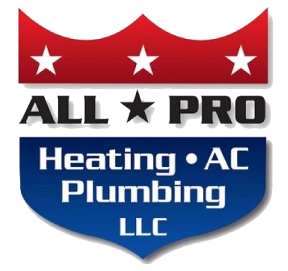
As the days gradually shorten and the air begins to carry a crisper edge, many homeowners in Sullivan, IL find themselves thinking about adjusting their home’s comfort systems. Your HVAC system, which has worked hard all summer to keep you cool, now faces a new set of demands. Transitioning your home from summer to fall comfort is not just a matter of switching a thermostat setting—it involves a series of important steps to ensure your system operates efficiently, safely, and reliably. Partnering with a professional HVAC contractor can make this process seamless, saving you stress, energy, and potential repair costs down the line.
Understanding the nuances of seasonal changes and how they impact your HVAC system can help you enjoy a comfortable, healthy home environment while avoiding common pitfalls. Let’s explore how an HVAC contractor in Sullivan, IL can support this transition, why their expertise matters, and practical steps you can take to prepare your system for fall.
Why Seasonal HVAC Transitions Matter
Your HVAC system works hardest during the extremes of summer and winter, but the transition periods—spring to summer and summer to fall—present their own unique challenges. When moving from the warmer summer months to the cooler fall temperatures, several factors affect indoor comfort and system efficiency:
-
Temperature Fluctuations: Fall often brings unpredictable temperature swings, sometimes varying by 20 degrees or more in a single day. Without proper adjustments, your HVAC system may struggle to maintain consistent indoor comfort.
-
Humidity Changes: As outdoor humidity levels drop, indoor air can feel drier, which may impact comfort and even the health of your home’s wooden structures and furnishings.
-
System Wear and Tear: Heavy use in summer can leave your system strained. Transitioning seasons without inspection may exacerbate existing issues, potentially shortening the lifespan of your equipment.
According to the U.S. Department of Energy, a well-maintained HVAC system can operate up to 15% more efficiently, translating into both energy savings and improved comfort. By addressing seasonal transitions proactively, homeowners can maximize efficiency, avoid unexpected breakdowns, and extend the life of their equipment.
Pre-Fall HVAC Inspection: The First Step
A professional HVAC contractor begins the fall transition process with a thorough inspection of your system. This inspection typically includes:
-
Checking System Components: The contractor examines the furnace, air handler, and ductwork for signs of wear, corrosion, or debris. Even small issues, such as loose electrical connections or clogged filters, can compromise performance.
-
Evaluating Airflow: Proper airflow ensures even heating throughout your home. Technicians check for blockages, leaks, or obstructions that could reduce efficiency.
-
Testing Safety Features: Safety is paramount. Contractors inspect carbon monoxide detectors, ventilation, and gas connections to ensure safe operation as your heating system begins regular use.
Research by the National Fire Protection Association highlights that malfunctioning heating systems are a leading cause of home fires during the cooler months. By scheduling an inspection with a qualified HVAC professional, you can significantly reduce these risks and ensure your system is prepared for consistent fall operation.
Cleaning and Maintaining HVAC Components
After a thorough inspection, the next step is cleaning and maintenance. Summer use can leave your system with accumulated dust, pollen, and debris that impede efficiency. Maintenance may include:
-
Replacing Air Filters: Clean air filters improve airflow, reduce allergens, and prevent strain on your system. The Environmental Protection Agency recommends checking filters monthly and replacing them at least every three months.
-
Duct Cleaning: Dust and debris in ductwork can reduce air quality and system efficiency. Contractors can perform partial or full duct cleaning depending on the system’s condition.
-
Condenser and Coil Cleaning: Even if the air conditioner isn’t in use, residual dirt on coils can affect airflow and heat exchange efficiency once the system switches to heating.
Regular maintenance not only improves comfort but also reduces energy consumption. The U.S. Department of Energy estimates that clean, well-maintained HVAC systems use up to 15% less energy than neglected ones—a cost-effective benefit for homeowners preparing for fall heating.
Transitioning from Cooling to Heating
One of the most important aspects of fall HVAC preparation is ensuring your heating system is ready to take over from cooling. This transition involves several key steps:
-
Thermostat Adjustments: Modern programmable thermostats can automatically adjust temperatures based on time of day and occupancy. A contractor can calibrate or reprogram your thermostat to optimize comfort and efficiency.
-
Furnace Ignition Check: For homes with gas or oil furnaces, ensuring the ignition system operates safely and reliably is critical. Professional inspection confirms that burners, heat exchangers, and flame sensors are functioning properly.
-
Pilot Light and Gas Line Safety: For older systems with pilot lights, contractors verify proper ignition and inspect gas lines for leaks or damage, safeguarding your home against potential hazards.
A properly executed transition ensures your home remains comfortable during fluctuating temperatures and reduces the likelihood of emergency service calls once the first cold snap arrives.
Improving Indoor Air Quality for Fall
As outdoor temperatures drop, homeowners often spend more time indoors, making indoor air quality increasingly important. An HVAC contractor can help improve air quality through several approaches:
-
Humidifiers and Dehumidifiers: Fall air tends to be drier, which can irritate skin, sinuses, and even furniture. A contractor can install or adjust whole-home humidifiers to maintain optimal indoor humidity levels (generally between 30-50%).
-
Air Purification Systems: HVAC-compatible air purifiers help reduce allergens, dust, and pathogens, creating a healthier home environment.
-
Filter Upgrades: Upgrading to higher-efficiency filters (such as MERV 8-13 ratings) can capture smaller particles, improving overall air quality.
According to the American Lung Association, improving indoor air quality can reduce allergy symptoms, respiratory issues, and even the spread of airborne illnesses, which is particularly valuable during seasonal changes.
Energy Efficiency and Cost Savings
Preparing your HVAC system for fall isn’t just about comfort—it’s also about efficiency and cost savings. A well-maintained system consumes less energy, reducing monthly utility bills. Key energy-saving steps include:
-
Sealing Ductwork: Leaky ducts can waste up to 20% of heated air, according to the U.S. Department of Energy. HVAC contractors can locate leaks and seal ducts to ensure more consistent airflow.
-
Programmable Thermostats: Setting schedules to reduce heating when no one is home can lower energy use by up to 10-15% annually.
-
Regular Maintenance: Seasonal inspections and cleanings keep systems operating at peak efficiency, preventing minor issues from escalating into costly repairs.
By investing in these improvements before the heating season begins, homeowners can enjoy both immediate comfort and long-term savings.
Troubleshooting Common Fall HVAC Issues
Even with proper preparation, some issues can arise during the seasonal transition. HVAC contractors can identify and resolve common problems, such as:
-
Uneven Heating: Rooms that are too hot or cold may indicate duct imbalances or blocked vents. Professional technicians can adjust airflow to ensure uniform temperature throughout the home.
-
Strange Noises: Rattling, buzzing, or popping sounds often point to mechanical issues, such as loose components or motor problems. Early detection prevents system failure.
-
Poor Airflow: Reduced airflow may stem from dirty filters, blocked ducts, or failing blower motors. Addressing these issues promptly maintains comfort and system efficiency.
Prompt attention to these problems not only improves home comfort but also prolongs the lifespan of your HVAC equipment.
Benefits of Working with a Local Sullivan, IL HVAC Contractor
Choosing a local contractor in Sullivan, IL comes with distinct advantages. Local HVAC professionals bring:
-
Community Knowledge: Understanding local climate patterns, such as temperature swings and humidity changes, allows contractors to recommend systems and settings optimized for Sullivan homes.
-
Responsive Service: Local contractors can provide quicker emergency support and seasonal maintenance visits compared to non-local providers.
-
Personalized Recommendations: Technicians familiar with area homes can identify common issues, such as older duct systems or insulation challenges, providing tailored solutions.
Partnering with a trusted local contractor ensures that your HVAC system operates efficiently, safely, and reliably throughout seasonal transitions.
DIY Steps to Support Your HVAC System
While professional services are essential, homeowners can take simple steps to support their HVAC system during the fall transition:
-
Regular Filter Checks: Inspect and replace filters monthly to maintain airflow and system efficiency.
-
Clear Vents and Registers: Ensure furniture or decorations do not block airflow, which can strain the system.
-
Monitor Thermostat Settings: Adjust settings gradually to allow the system to adapt without overworking.
-
Inspect Outdoor Units: Remove debris around exterior components to prevent blockages or damage.
These proactive steps complement professional services, helping your system run smoothly and efficiently.
When to Schedule Professional HVAC Service
Timing is crucial for seasonal HVAC transitions. Experts recommend scheduling professional service before the first cold snap to ensure your system is ready. Waiting until temperatures drop can lead to longer wait times for appointments and potential emergency repairs. A contractor can perform:
-
Full system inspections
-
Cleaning and maintenance of heating components
-
Calibration of thermostats and control systems
-
Adjustments to ductwork and airflow
Scheduling service early provides peace of mind, knowing your home will remain comfortable regardless of changing temperatures.
Signs Your System Needs Attention
Even with regular maintenance, some signs indicate your HVAC system requires immediate professional attention:
-
Strange odors, such as burning or gas smells
-
Inconsistent indoor temperatures or cold spots
-
Higher-than-normal energy bills
-
Frequent cycling on and off
Noticing any of these symptoms warrants prompt evaluation by a qualified HVAC technician, preventing further damage and ensuring your family’s safety.
For HVAC Services in Sullivan, IL, Contact All Pro Heating, AC, Plumbing Today
Preparing your home for seasonal changes is not just a convenience—it’s a critical step in maintaining comfort, safety, and efficiency. Whether it’s inspecting your system, cleaning components, adjusting your thermostat, or troubleshooting potential issues, professional HVAC contractors are your best resource for a smooth transition from summer to fall comfort.
At All Pro Heating, AC, Plumbing, we specialize in helping Sullivan homeowners keep their homes cozy and efficient through every season. Our experienced team provides thorough inspections, professional maintenance, and reliable repairs, ensuring your HVAC system operates safely and efficiently. By partnering with a trusted local contractor, you can enjoy peace of mind, knowing your home is prepared for the cooler months ahead. Contact All Pro Heating, AC, Plumbing today to schedule your HVAC service and experience the benefits of expert care for your home’s comfort.
